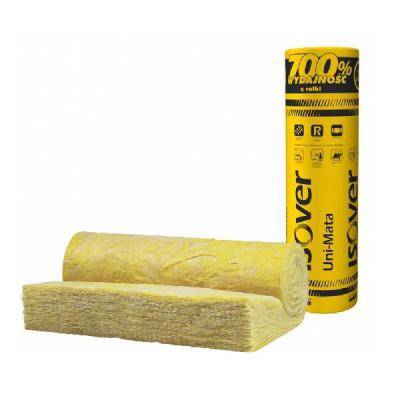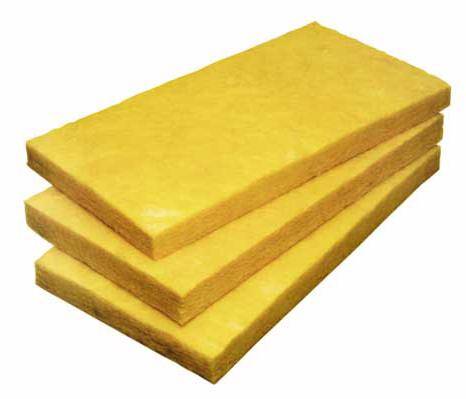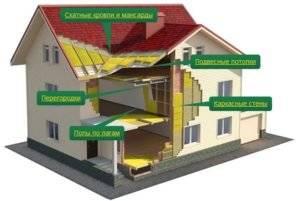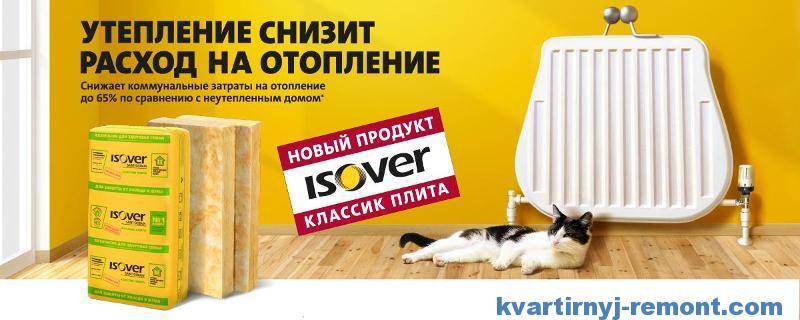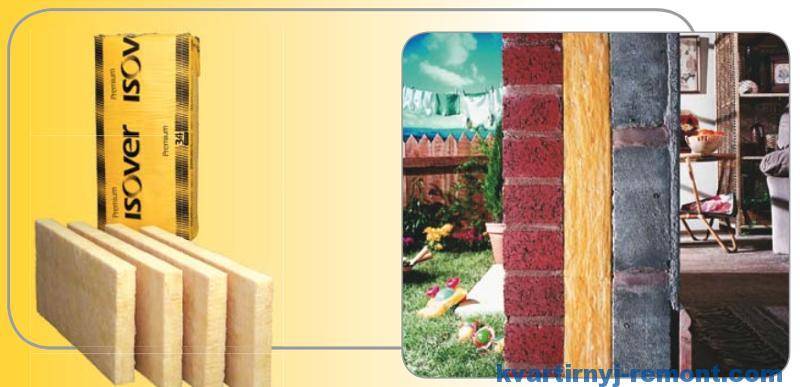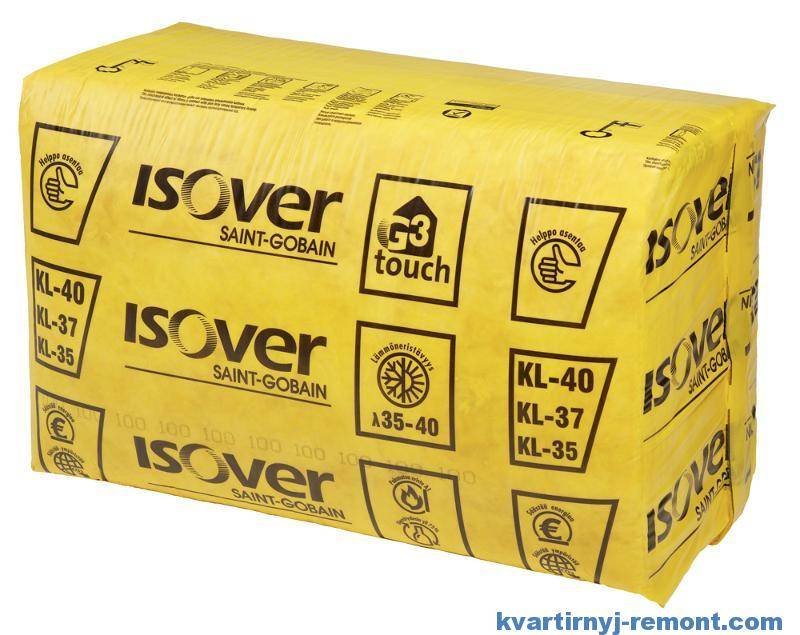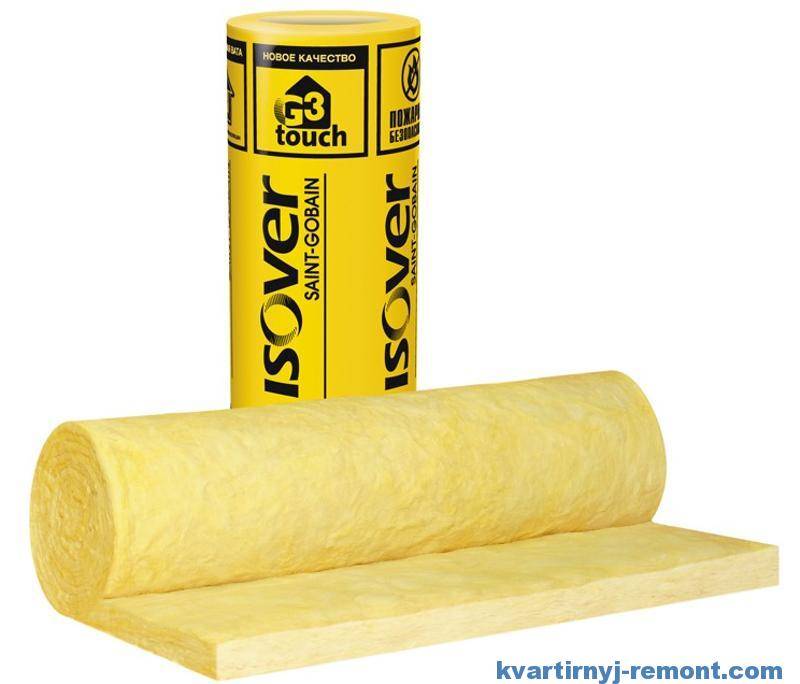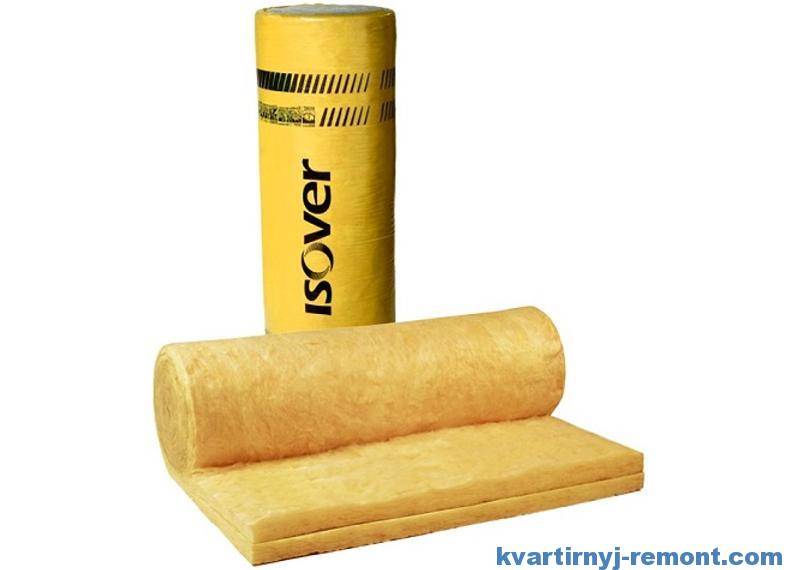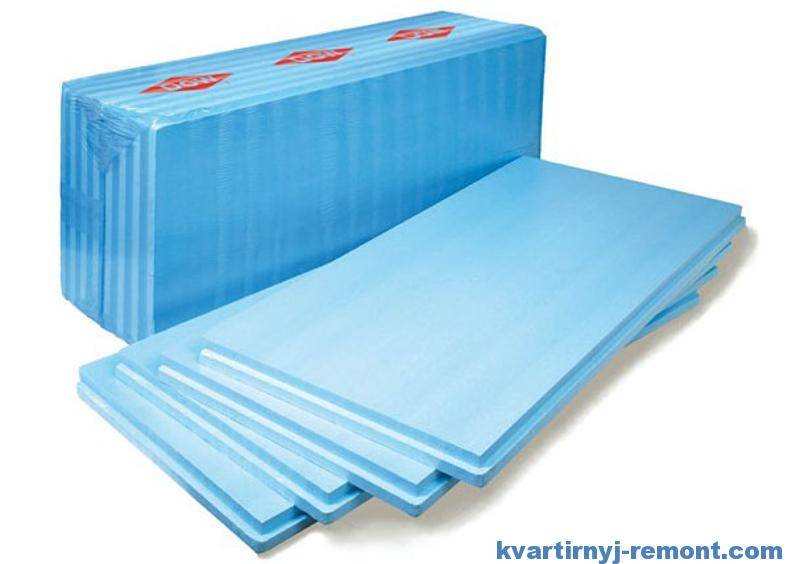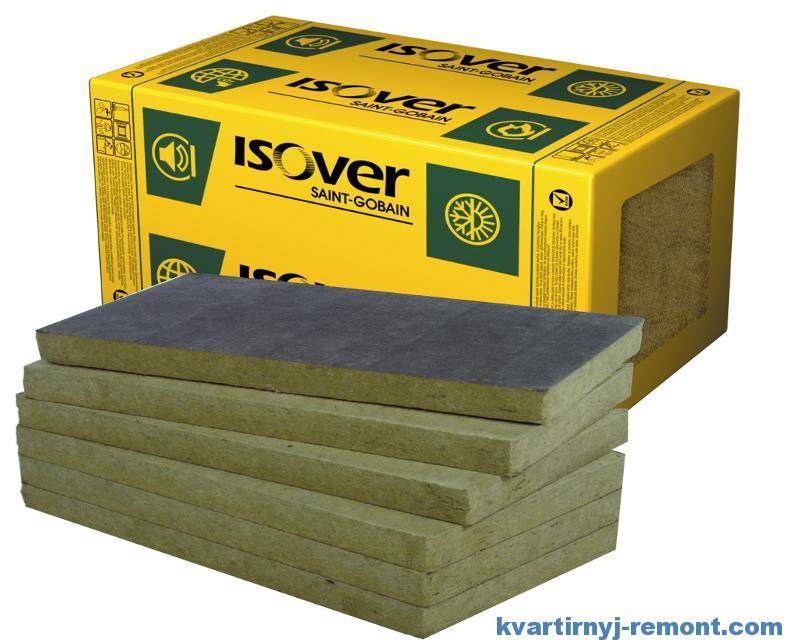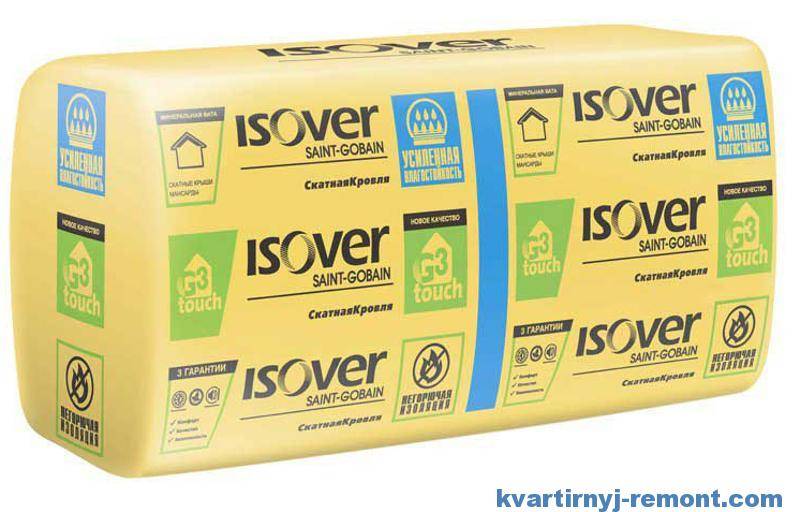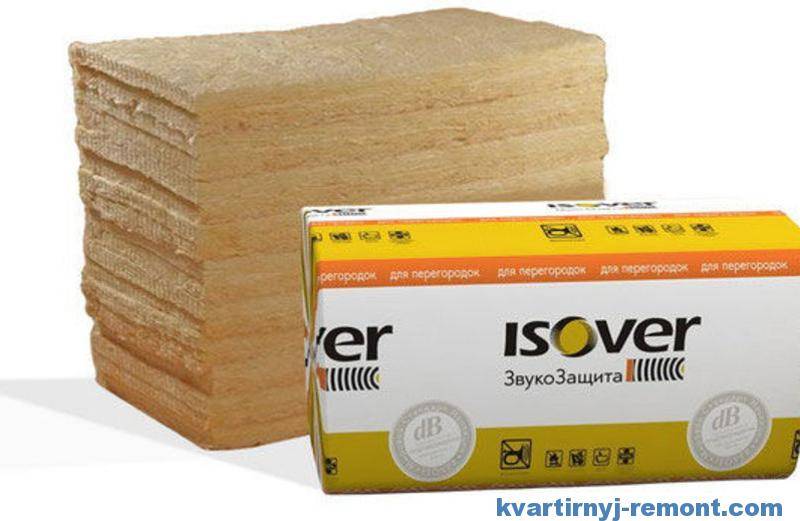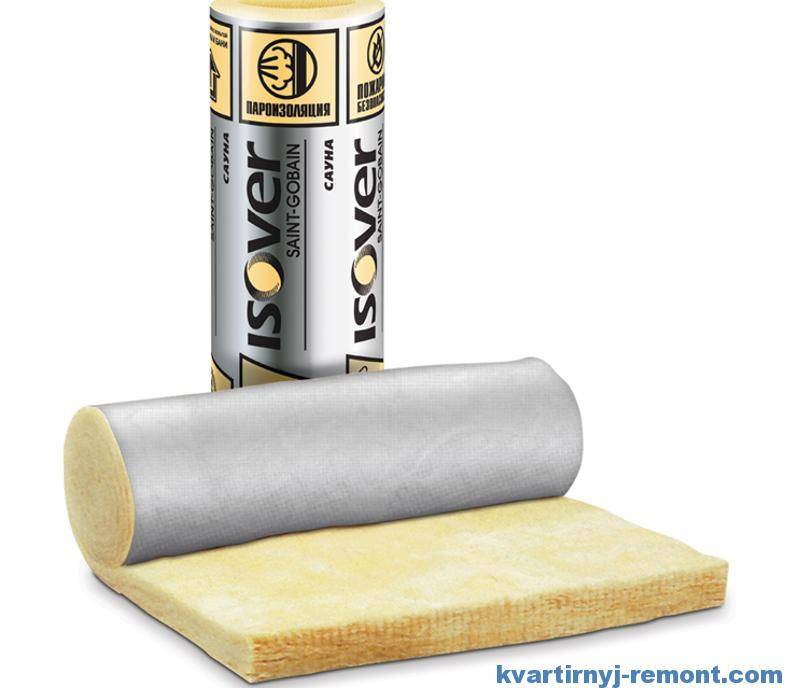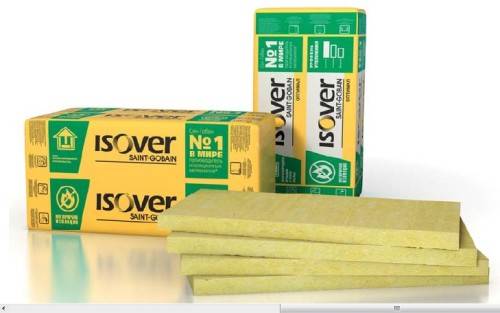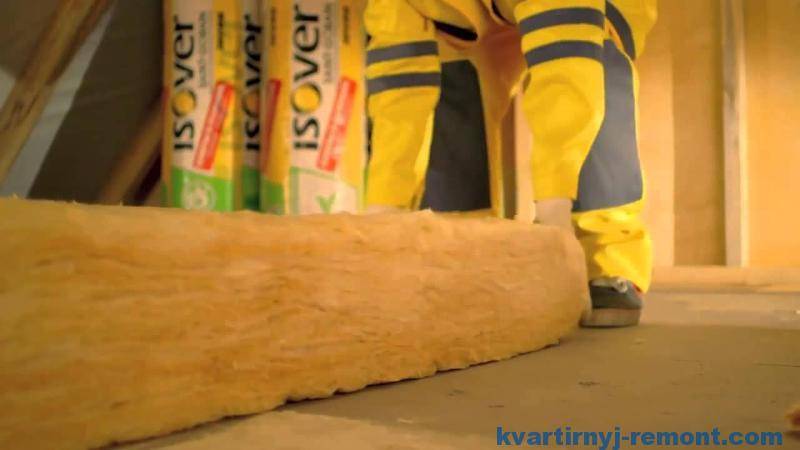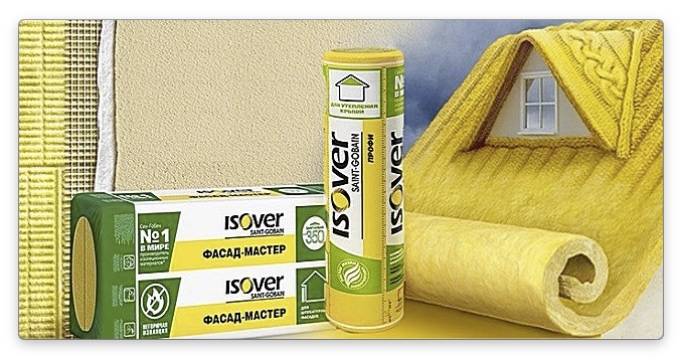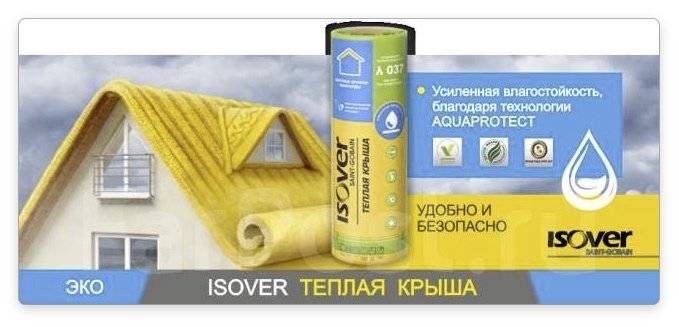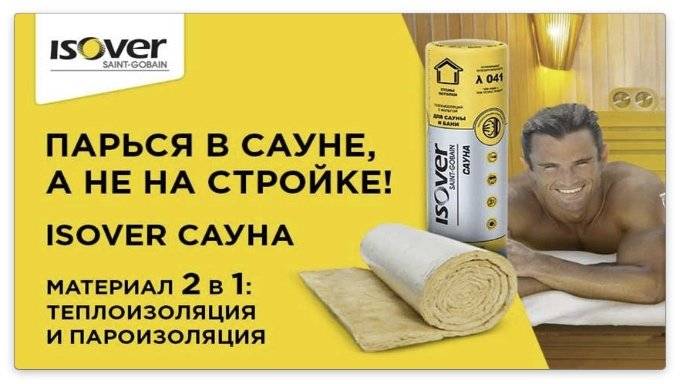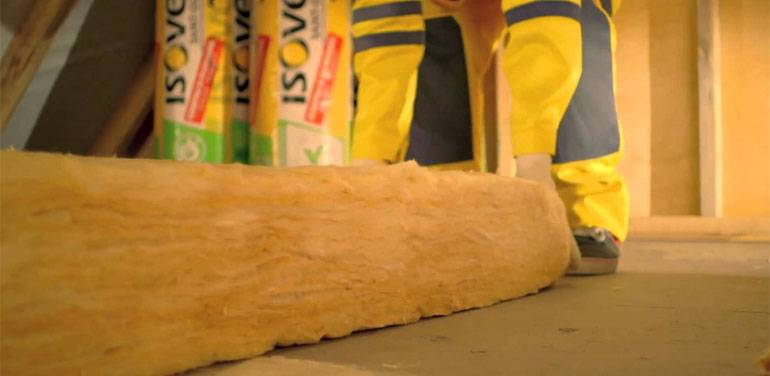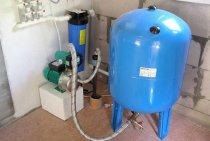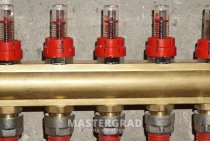How is it made
So, what is the Isover insulation? The characteristics of any insulating material depend primarily on how accurately the required technologies are observed in the process of its production. Isover insulation is made as follows:
- Quartz sand, cullet, limestone, soda ash and other minerals are thoroughly mixed beforehand.
The resulting mixture is melted at a temperature of 1300 gr. until a homogeneous fluid plastic mass is obtained.
In a special installation, this liquid glass is fed from a great height onto a bowl rotating at high speed, in the walls of which there are small holes. Under the action of centrifugal force, the hot mass is squeezed out in the form of long thin threads.
The fibers are mixed with a yellow polymer adhesive.
The resulting sticky mass is fed into a special furnace, where it is rolled between steel shafts and blown with hot air. As a result, the glue seizes, and the layer itself is leveled.
Finished glass wool goes under the circular saws for cutting into slabs of the required size.
Material Specifications
With an optimal price / quality ratio, thermal insulation has the following technical characteristics:
It needs to be clarified that these are averages. The insulation is produced in a wide range, so the density and thermal conductivity may vary.
| № | Name | Dimensions | Thermal conductivity | Weight | Volume (pack/m2/m3) |
| 1 | Isobox Extralight | 1200mm*600mm*50mm | 0.038 W/(m*K) | ~ 4.8 kg/pack | 8 pcs/pack 5.76 m2/0.288 m3 |
| 2 | Izover Classic Plus | 1170mm*610mm*50mm | 0.039 W/(m*K) | ~ 6.5 kg/pack | 14 pcs/pack 10 m2/0.5 m3 |
| 3 | Isover Classic TWIN-50 | 6150mm*1220mm*50mm | 0.041 W/(m*K) | ~10 kg/pack | 2 pcs/pack 15 m2/0.75 m3 |
| 4 | Izover Karkas P-34 | 1170mm*619mm*50mm | 0.034 W/(m*K) | ~7.61 kg/pack |
16 pcs/pack 11.42 m2/0.571 m3 |
Mounting Features
The frame for "Izover" can be assembled both from a wooden bursa and from a metal profile. The distance between the individual elements of the crate should be slightly less than the width of the insulation boards. This allows you to install them by surprise.
Of course, Izover, the technical characteristics of which we have described, when used as a heat or sound insulator, must be protected from moisture. In order to prevent it from getting wet, vapor and waterproofing films are used. When assembling the pie walls or roofs in this case, a certain order of installation of materials is observed. The vapor barrier is mounted from the inside. Due to the difference in temperature, the humidity in rooms and attics is usually higher than outside. Therefore, condensation forms on the walls and ceiling. The use of a vapor barrier prevents it from getting on the insulation. A waterproofing film is mounted outside. It protects the Isover from getting wet during rain or snow melt.
Additional fasteners when installing plates, as already mentioned, are not used. They are only needed when mounting the material on the ceiling. In order to completely exclude their loss, in this case, special dowels-"fungi" are used.
Since the material is capable, albeit in small quantities, of emitting substances harmful to human health, when installing it from the inside of the premises, it is necessary to carefully monitor the tightness of all seams of the fine finish.
Description and application
The presented material has many advantages and disadvantages of mineral wool. And this is not surprising, since their properties are quite close. It is produced in the form of plates, which can be both rigid and semi-rigid. There is still an opportunity to buy Isover in the form of rolls and mats.They are used in the arrangement of the roof and facades of the house, ceilings, walls and floors.
Isover is based on glass fibers, the length of which reaches 100-150 microns, and the thickness is 4-5 microns. It is these parameters that allow the Izover heat insulator to obtain high rates of elasticity and resistance to stress.
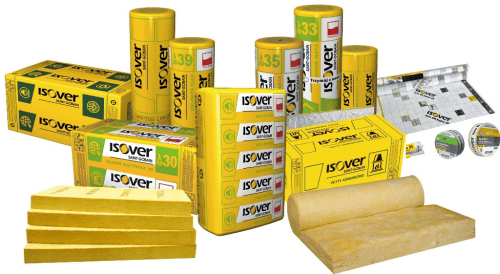
Characteristics and scope
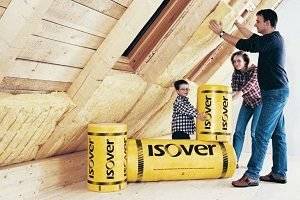
The main competitors in the mineral insulation market are Ursa, Izovol, Rockwool, Parok, Knauf. Izover mineral wool has a wide range of applications in general construction works. For industrial work, Izover produces insulation under the Isotec brand.
Izover is used for the following types of work:
- thermal insulation and sound protection of external walls;
- roof insulation;
- ventilated facade systems, multilayer walls;
- for sound insulation of internal partitions;
- in industry - for insulation of pipelines, ventilation, etc.
Izover, like other insulation, has its advantages and disadvantages.
The advantages of Izover include:
- Ease of transportation and storage - the manufacturer compresses the insulation 5-6 times when it is packed. Izover 100% restores shape.
- Product lines with different technical characteristics are designed for different areas of construction. For example, Isover Soundproof or Isover Pitched Roof.
- High elasticity. The insulation surpasses other mineral wools in this indicator, thanks to the special TEL technology by which it is produced.
- High energy efficiency - 5 cm of mineral wool are equal in thermal conductivity to 1 m of brickwork.
- Refers to non-combustible materials. The use of mineral wool for thermal insulation of a house does not increase its fire hazard class.
- Noise protection. Due to the fact that there is air between the fibers of the insulation, it does not transmit sounds well.
- The warranty period declared by the manufacturer is 50 years.
- Resistant to biological and chemical attack.
- Light weight - 28-60 kg/m3.
- Convenient to work. To insulate the surface, you just need to roll out the roll.
- Does not shrink during use.
- Environmentally friendly material. Holder of EcoMaterial Absolute ecolabel and ISO 14001:2004 international environmental management certificate.
- Heat resistant.
- High density and rigidity, which allows you to mount the insulation without additional fasteners.
The disadvantages of Izover include:
- The soft structure of cotton wool limits the scope of its application.
- Absorbs moisture well. A ventilation gap is required during installation. If it is not done, cotton wool can be saturated with moisture and lose its technical characteristics, and even completely freeze in winter.
Izover application, its specificity and varieties
It is known that about forty percent of heat loss occurs through the wall partitions of the building, so the insulation of “weak spots” with high-quality material, subject to and following all the installation rules, is a guarantee of keeping heat in the house. As a result, spending on more expensive and reliable insulation will provide further savings on heating all rooms in the cold season.
The manufacturing company offers customers to choose the most suitable insulation among several types, which can be divided depending on the application.
Areas of application of Izover thermal insulation:
- roofs and ceilings;
- external walls;
- internal, interroom partitions.
Further types of Izover products ...
Isover KL-34
This type of Izover product is a plate, the thickness of which can be 5 or 10 centimeters. It is suitable for insulation of any planes - vertical, horizontal, inclined. Due to the tight fit on the frame, the use of additional fasteners is not required.Often, KL-34 boards are used to insulate ventilated facades.
Isover KL-37
A soft fiberglass based thermal insulation designed to work in buildings where the insulation is not heavily stressed. Interestingly, the packaged material is subjected to additional compression by 2 times - this helps to reduce the total volume, thereby slightly reducing shipping costs. Like the previous type of Izover insulation, KL-37 does not need additional fasteners. However, it should be remembered that during installation it is necessary to observe the condition - to strive for the tightest fit of the plates to the surface.
Isover KT-37
It is used for insulation of attic rooms, roofs, as well as interfloor ceilings. The main difference from KL-37 is that it is a roll material. The rest of the characteristics, recommendations for operation and installation are the same.
Isover KT-40
It is supplied in rolls and, unlike other Izover products, this type of material consists of two layers, each of which is 5 centimeters thick. The KT-40 will be ideal if the installation is in a wooden or metal frame, where the distance between the posts is 60 centimeters.
Isover STYROFOAM 300A
Produced in the form of plates with extruded polystyrene foam. This material requires the use of fasteners. Due to the special composition of STYROFOAM 300A boards, the heat and moisture protection indicators are higher than those of many similar products. This type of insulation Izover has found its application in the thermal insulation of walls, floors and flat roofs. It is allowed to apply a layer of plaster directly on top of the slabs.
Isover VENTITERM
Insulation based on mineral wool with basalt fibers. The versatility of this material is due to the fact that installation can be carried out both with the use of fasteners and without it. Professionals have long found use for this insulation in the insulation of plumbing systems and ventilation pipes.
Izover Pitched roof
To protect the roof, Izover Pitched Roof has been specially designed. This type of insulation allows not only to keep warm, but also, due to the ability to absorb sounds from the outside, creates an atmosphere of peace and quiet. The positive properties also include the incombustibility of the material and good vapor permeability. It must be remembered that the pitch of the truss system must correspond to the dimensions of the insulation boards.
Izover Soundproofing
Izover Sound Protection mats and slabs are specially designed to minimize the possibility of outside noise penetration. Installation can be carried out in internal partitions or suspended ceilings.
Izover Sauna
Heater Izover Sauna. In addition to the fact that this material has all the qualities of a high-class insulation, Izover Sauna also creates a vapor barrier, making it ideal for installation in baths, saunas and rooms with high humidity. The material is mats with a thickness of 5 or 10 centimeters and is supplied in rolls.
For the convenience of searching and selecting the right product, the manufacturer of thermal insulation materials Izover developed and presented a line of products indicating the purpose and scope right in the title:
- Izover Warm House.
- Izover Warm Roof.
- Izover Warm Walls.
- Izover Quiet House.
Izover characteristics
Of course, before choosing this material for home insulation, you should find out what specific properties it has. There are several varieties of Isover insulator. They are all slightly different in features. Materials of this brand are produced with different indicators of density and thermal conductivity.
Insulation "Isover Classic" characteristics, for example, has the following:
|
Coef. thermal conductivity |
At 25 gr. - 0.041 W / mK At 10 gr. — 0.038 W/mK |
|
Density |
About 15 kg/m3 |
|
fire resistance |
NG |
|
Water absorption |
per day no more than - 0.08 kg / m |
|
Width |
1220 mm |
|
Length |
6150 mm |
|
Thickness |
50 mm |
This type of Isover insulation is currently the most popular. Other types of insulators of this brand also have good qualities.
Isover is supplied, the characteristics of which, therefore, make it possible to judge it as a really effective insulation, in plates and mats that are convenient for installation.
Types of mineral wool Izover
Isover does not manufacture universal mineral wool. There are such classification principles by which varieties are determined:
- Light thermal insulation - these are mats and slabs that are suitable for processing the walls of brick and wooden houses, as well as for roof insulation. Do not use them for finishing foundations and floors.
- General building insulation. This category includes soft slabs for frame structures and medium-rigid, rolled mats, mats with foil on one side.
- Mineral wool for special purposes. This group includes materials for pitched roofs, which have absolute incombustibility, increased hydrophobic properties and good vapor permeability.
The main characteristics and features of Izover insulation based on fiberglass
Izover insulation is a durable, elastic material that is highly resistant to significant loads. The production of this type of product takes place according to the modern, patented TEL technology. Fiberglass is used as the main component.
There are several main characteristics of Izover insulation:
Coefficient of thermal conductivity. The indicated value is - 0.038 W / (m * K) (in the International System of Units (SI), thermal conductivity is measured in watts per meter-kelvin). Due to such a low value, the fiberglass that is part of the Izover insulation does an excellent job of retaining air and retaining heat.
Soundproof properties. The air gap that forms between the glass fibers allows you to create maximum protection against noise.
combustibility of the material. The entire line of Izover thermal insulation materials has passed a special test. Products with a density of less than 30 kg/m³ belong to the NG class - non-combustible building materials (combustibility tests were carried out in accordance with GOST 30244–94). It follows from this that the use of Izover insulation for thermal insulation of a private house or a large, industrial building is completely safe.
Moisture resistance and vapor permeability. These parameters are very important, because the ability to withstand moisture depends on how well the material will perform its main functions. With humid indoor air (and for residential buildings and normal human well-being, this figure should be at least 40%), the fiberglass that is part of the Izover heat-insulating plates / rolls may slightly worsen its heat-shielding properties. To prevent this from happening, it is necessary to leave a small distance between the wall and the insulation during installation (about 2 cm). Since fiberglass can “give up” excess moisture quite quickly, this air gap will help to avoid its accumulation in the material.
It should also be mentioned that the composition of the insulation includes water-repellent additives that have water-repellent qualities.
Life time. Building a house is a complex, long and painstaking process that requires maximum attention to the quality of building products. Since the insulation is one of those materials, the replacement of which is quite laborious and involves considerable material costs, one should study not only the characteristics of thermal protection, but also the service life. There are examples of half a century of use of Izover materials without any loss of thermal insulation properties.
Environmental Safety. Izover products are environmentally friendly thermal insulation materials, the safety of which for human health has been proven and documented.On the official website of the manufacturer, anyone can freely study the environmental product declaration EPD (Environment product declaration). In addition, insects or mold will never start in Isover products.
Weight. Isover insulation is lighter than many other similar materials from other manufacturers. This characteristic allows the use of Isover in rolls or slabs in those buildings where it is necessary to reduce the load on walls and other ceilings.
Product release form. The manufacturer offers the consumer various options for the release forms - rolled material or plates with different stiffness. In addition, Izover insulation can be single-layer, with a thickness of 5 to 10 cm, or two-layer, with a thickness of at least 5 cm for each layer.
Standard dimensions for slabs: 1 meter wide, 1 meter long. However, at the request of the customer, it is possible to change these parameters.
Standard dimensions of Izover roll insulation: 1.2 meters wide, 7–14 meters long. The total area is from 16 to 20 m². After opening the package, you must wait a few minutes for the material to straighten itself and completely.
What is Isover insulation valued for?
The main characteristics of Izover insulation include:
- Thermal conductivity;
- Soundproofing;
- resistance to burning;
- Vapor permeability;
- Long service life;
- Ecological cleanliness;
- Convenient form of packaging;
- Small specific weight.
The laboratory established coefficient of thermal conductivity of the Isover material, equal to 0.041 watts / sq. meter - today it is considered the best among competitors. It should be added that this coefficient remains unchanged even after years of operation.
The Izover texture provides for the presence of air layers, which provides the material with the ability to absorb sound. Thus sheets and mats given min. wool can guarantee acoustic comfort not only by attenuating unnecessary noise through internal partitions, but also by isolating extraneous noise from outside the building.
Events dedicated to compliance with all-Russian standards confirmed that Isovera belongs to the class of non-combustible substances. This made it possible to expand the applicability of this heat insulator for almost any object - from industrial buildings to schools and kindergartens.
Vapor permeability is another property of the Izover material, where it has few competitors. The ability to absorb moisture and quickly release it here guarantees the presence of fiberglass.
It should be noted that the main purpose of Isover - to keep warm - is very dependent on the moisture content inside the substance. For example, increasing the humidity min. cotton wool by only 1% worsens his main ability immediately by 10%. An effective solution to this problem can be an air gap (2-3 cm) between the sheets of the heat insulator.
The unique composition of the heat-insulating Isover guarantees the preservation of its qualities for almost the entire life of the building (40-50 years). In addition, glass fibers discourage the desire of insects and rodents to equip their homes and nests in this heat insulator.
Types of packaging
A number of tests have confirmed the environmental friendliness of the Izover heat insulator. This is confirmed by mandatory and voluntary certificates of compliance with environmental standards.
Of course, in different areas of construction - whether it be external walls or partitions, floors or roofs are convenient for use, there can be various versions of heat-insulating material
This in the company of Saint-Gobain is not given secondary attention. We list the most popular forms of packaging and the dimensions of its heat insulators
Isover's standard and most popular packaging is rolled mats. Here are its main dimensions:
- Thickness in unfolded form - 50 mm and 100 mm;
- Web width - 1220 mm;
- Mat length - 5490 mm and 7000 mm;
- Area - 6.7; 8.54; 13.4 and 17.1 sq.m.
The “mini-mats” package also claims to be the leader in popularity:
- Thickness -50 mm;
- Width - 610 mm;
- Length - 8200 mm;
- Area — 10 sq.m.
The "roof" package has a number of packages depending on the area of the insulated roof and the required degree of insulation:
- Thickness -50, 100, 150 mm;
- Width - 1220 mm;
- Length - 4000 and 5000 mm;
- Area - 4.88; 6.1; 12.2 m
Another type of packaging that is revered by builders is "semi-rigid mats" - "warm walls":
- Thickness - 50 and 100 mm;
- Width - 610 mm;
- Length - 1170 mm;
- Area - 5 and 10 square meters. m;
- Pieces in the package - 7 or 14.
In order not to spoil the mood
Since one of the main components of Izover is fiberglass, the technology for its use provides for some security measures. So in order for the installation of the insulation to be absolutely safe, comfortable and fun, you will need:
- Clothing that covers access to open parts of the body;
- Lightweight but thick cloth gloves;
- Glasses;
- Gauze bandage or respirator.
Izover today is dozens of varieties of heat-insulating materials. To the credit of the company, Saint-Gobain never ceases to strive for excellence, modernizes production and improves technology. There are specialized options for heat insulators:
- For private and industrial housing construction;
- For thick walls and partitions;
- For flat and sloping roofs;
- For floors and ventilated facades and much, much more.
Thus, any builder can find a solution for each object in the product line from the French leader in the production of thermal insulators. At the same time, be sure, because the quality of this material is confirmed by practice and experience of use around the world.
Summing up, we will conclude that the decision in favor of heat or sound insulating material under the brand name "Isover" is the right step towards quality and reliability, to the warmth and comfort of your home.
Video
Stamps
Lines of heat-insulating products Isover has several dozen items and are designed to solve specific problems. All of them differ in the form of delivery, thickness, density and size.
For civil works
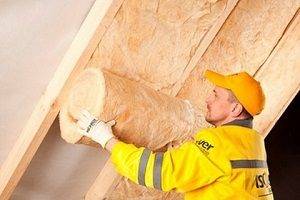
Supplied in rolls, plate thickness - 50, 100 and 150 mm. Does not require additional fasteners during installation, can be installed by surprise. Received positive reviews from builders.
It is used for insulation and sound protection:
- external walls inside and outside the house;
- pitched roofs;
- interfloor ceilings;
- frame walls;
- internal partitions;
- ventilated facades.
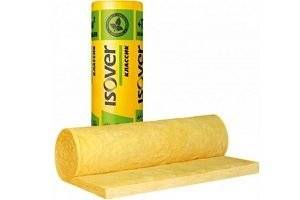
Application area:
- insulation of suspended ceilings;
- interfloor ceilings - the material lies between the lags;
- attic spaces.
Izover Classic stove. The form of mineral wool is a plate. Size - 610 * 1170 mm, thickness 50 and 100 mm. In a package of 5 and 10 m2.
Application area:
- insulation of frame walls;
- wall insulation from the inside;
- insulation of ventilated facades.
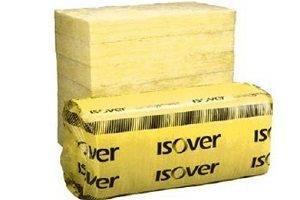
Application area:
- ventilated facades;
- frame walls.
Izover kl 37. Release form - plate. It is applied to warming and sound protection of a roof and interfloor overlappings.
Izover kt 40. Two-layer roll material. Thickness - 10 cm, each layer is 5 cm. It is used for warming horizontal planes.
Izover Sauna. Supplied in rolls, mat thickness 50 and 100 mm. The main feature is the presence of a vapor barrier layer. Suitable for rooms with high humidity. Refers to medium combustible materials. It is used for insulation of walls, floors and ceilings in baths and saunas.
Izover Uteplyaev. Universal mineral wool, available only for Siberia and the Far East.
Special Solutions
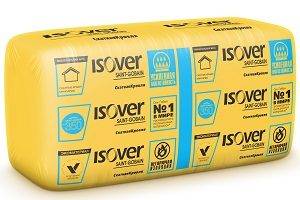
- Izover Pitched Roof. Possesses the increased moisture resistance.
- SoundProtection. Provides a high level of noise protection.
- Frame P32. It is intended for warming of frame houses. Provides savings in heating costs up to 25% compared to the base product.
- Frame M40-Al. Mineral wool with one-sided aluminum coating. Designed for wet areas, can be used without additional finishing.
- Izover Plaster Facade. Material of increased density, has low vapor permeability.
- Vent Facade Top and Vent Facade Bottom. Are applied to two-layer systems of warming of the ventilated facades.
- floating floor. It is intended for warming and sound isolation of a floor. Possesses the increased elasticity and density. It is made using the thorn-groove technology.
- Isover OL-P. Special solution for flat roofs. Has ventilated grooves to remove moisture. It is made using the thorn-groove technology, which increases the tightness of the mineral wool layer.
Types of insulation ISOVER
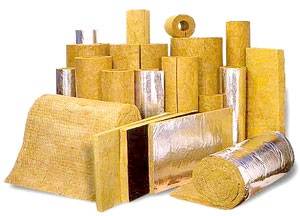
- Light thermal insulation. By production the TEL technology is used. Slabs and mats are produced. It can be used as a heater for the walls of a wooden or brick house, for roof insulation, it should not be used for insulation of foundations and floors
- General construction insulation. There are also several varieties: - soft fiberglass slabs for frame structures, - roll mats are used without fasteners, - mats, one side of which has a foil base, - medium hardness slabs
- The products are special. We are talking about ISOVER for pitched roofs. Such material has high hydrophobic characteristics, it does not burn and it has a high level of vapor permeability.
The ISOVER marking for civil engineering is as follows:
- KL - plates
- KT - mats
- OL-E - mats of special rigidity
- The numbers indicate the thermal conductivity class
ISOVER application
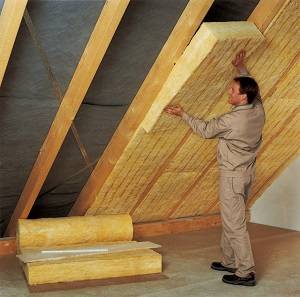
- ISOVER KT40 is recommended for use in ceiling and floor insulation. This is a material consisting of two layers that can be easily separated. Installation of horizontal surfaces does not require additional fixing
- ISOVER STYROFOAM 300A is a tile material that must be fixed when installed on vertical surfaces. Can also be used successfully on horizontal surfaces
- ISOVER KL 34, ISOVER KL 37 - boards that are released in pressed rolls. The material is used as insulation for walls inside the apartment, for insulation of internal partitions, for thermal insulation of ceilings, attic spaces
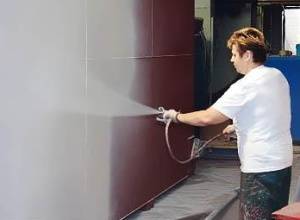
How to insulate walls and floors with Izover?
You need to work with this material in the same way as with any other insulation. The main thing to know is that high-quality insulation is a multilayer cake. And then there will be a positive result when the order of the layers of this pie is observed.
Wall insulation
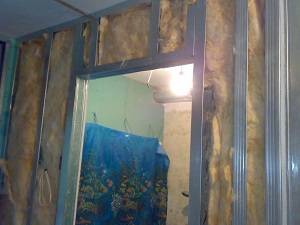
The technique for performing work can be as follows:
- Walls need to be primed
- Attach heat reflective sheet.This should only be done for walls that border the street.
- Make a vertical crate. It can be a full-fledged frame, but it can also be ordinary wooden planks. The step between the planks should be done according to the width of ISOVER
- Lay sheets of insulation, gluing them to the wall
- Attaching the moisture-repellent film
- Now you need to fill the horizontal bars
Ceiling insulation
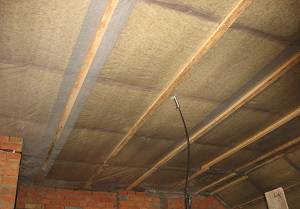
Disadvantages of ISOVER
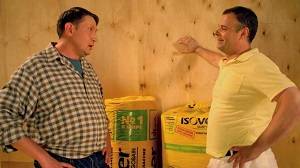
- ISOVER - it pricks and causes irritation. This can be avoided by wearing gloves.
- ISOVER is afraid of moisture and under its influence it loses all its positive qualities. This means that the material cannot be used outside (except for those types that have additional protection in the form of foil layers)
ISOVER cost
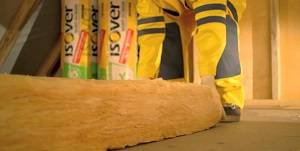
So, ISOVER KT 40 has the fortieth thermal conductivity class, a sheet thickness of 10 cm, belongs to non-combustible materials and costs 750 rubles.
ISOVER sheet, which can be used for pitched roofing, has dimensions of 100 / 1170 / 610 millimeters. Packing area from 14 to 17 m2 depending on sheet thickness. The cost is about 800 rubles.
Scope of fiberglass products
"Isover" is considered a universal insulation, therefore it is suitable for performing such work:
| The product's name | We recommend using it in conjunction with | |||||
| Classic | Classic Stove | Pro | Sauna | vapor barrier | hydro-moisture barrier | |
| Pitched roof insulation | fits | fits | recommend | — | Yes | Yes |
| Insulation of walls from the outside under sheathing or brick | fits | recommend | recommend | — | Yes | |
| Wall insulation from the inside | fits | recommend | recommend | — | Yes | |
| Insulation of frame walls | fits | recommend | recommend | — | Yes | Yes |
| Sound insulation of partitions | fits | recommend | recommend | — | ||
| Insulation of attic floors | fits | fits | recommend | — | Yes | |
| Basement floor insulation | fits | fits | recommend | — | Yes | |
| Soundproofing floors by joists | fits | fits | recommend | — | ||
| Soundproofing suspended ceilings | fits | fits | — | — | ||
| Insulation + vapor barrier of internal walls and ceilings | — | — | — | Yes |
